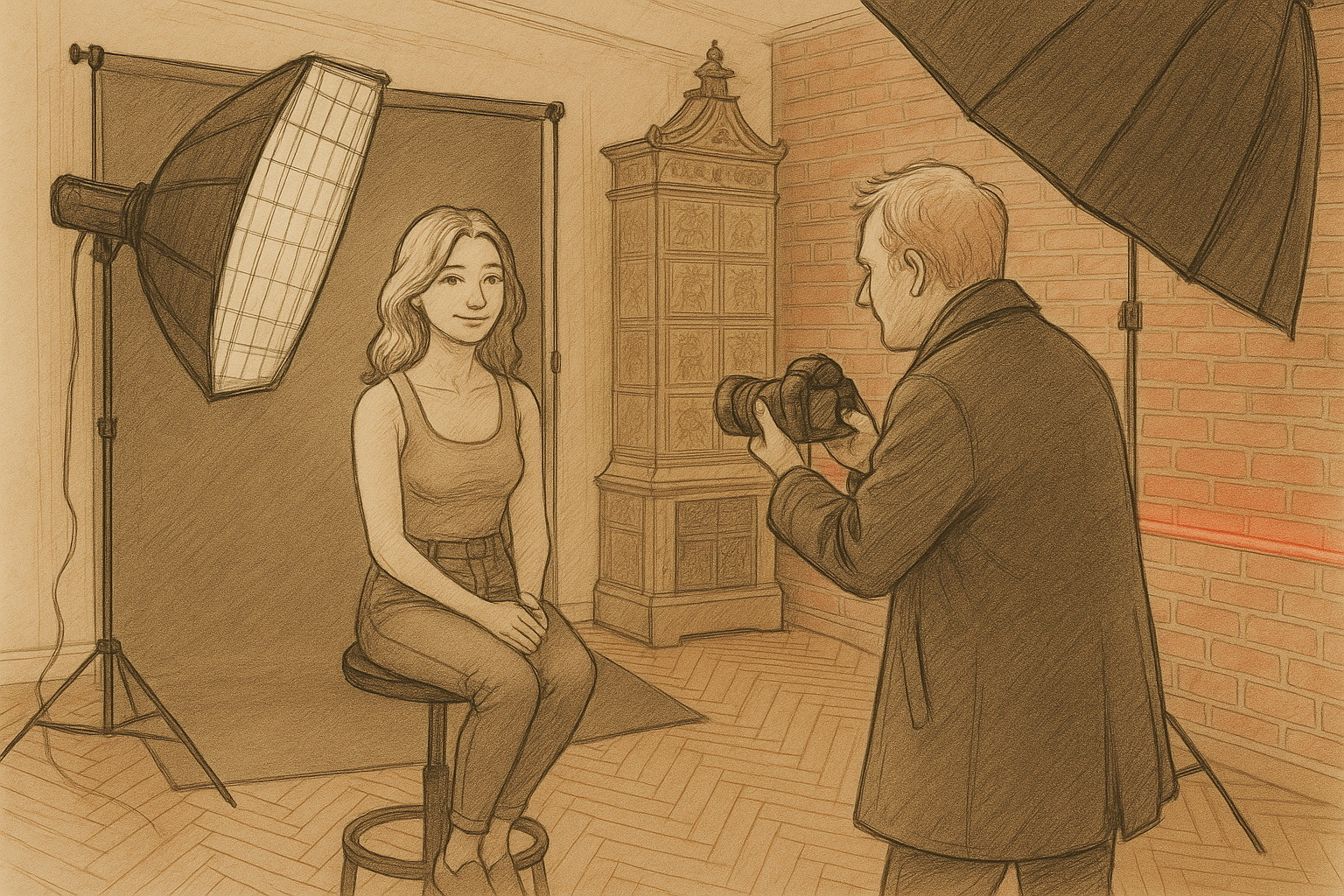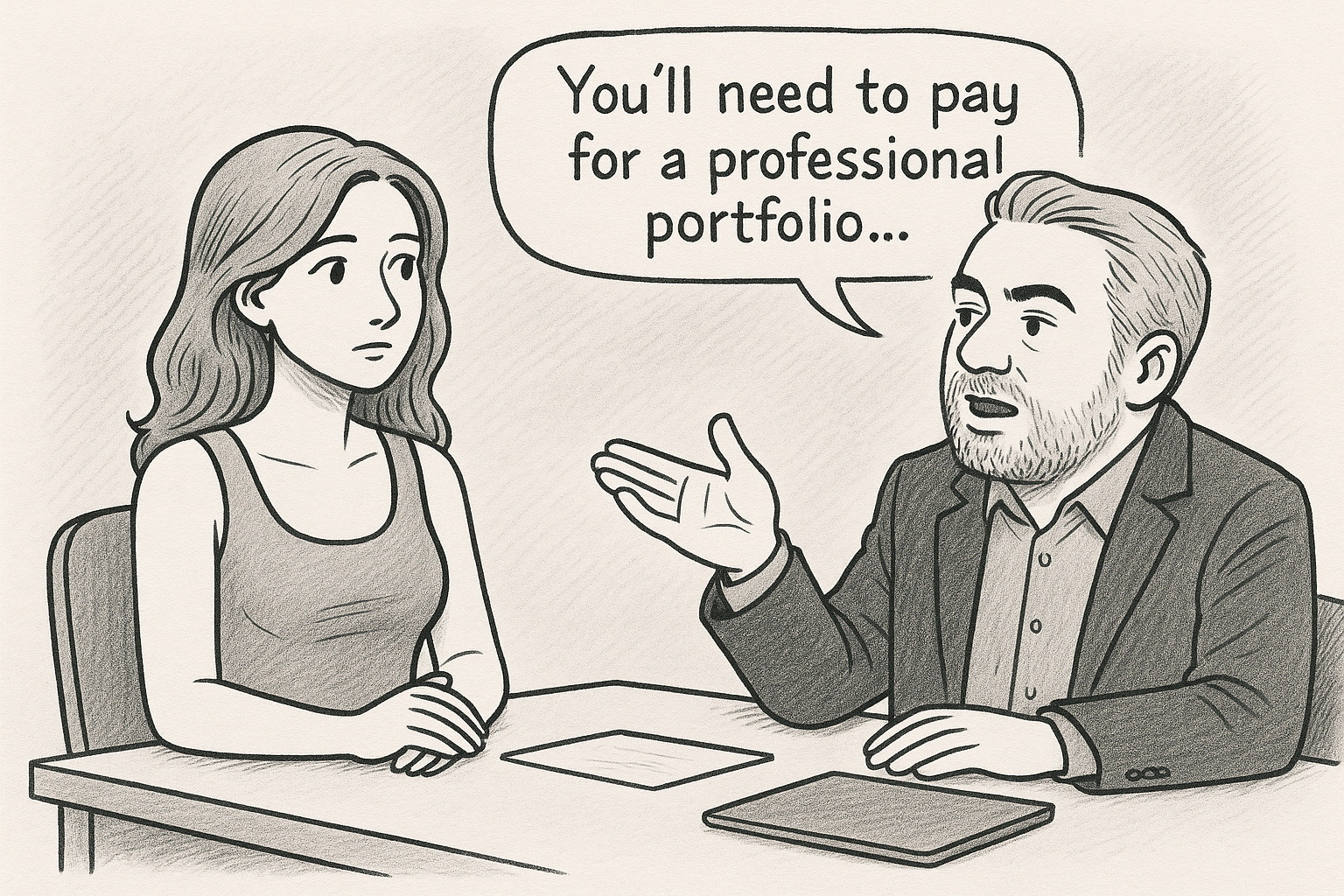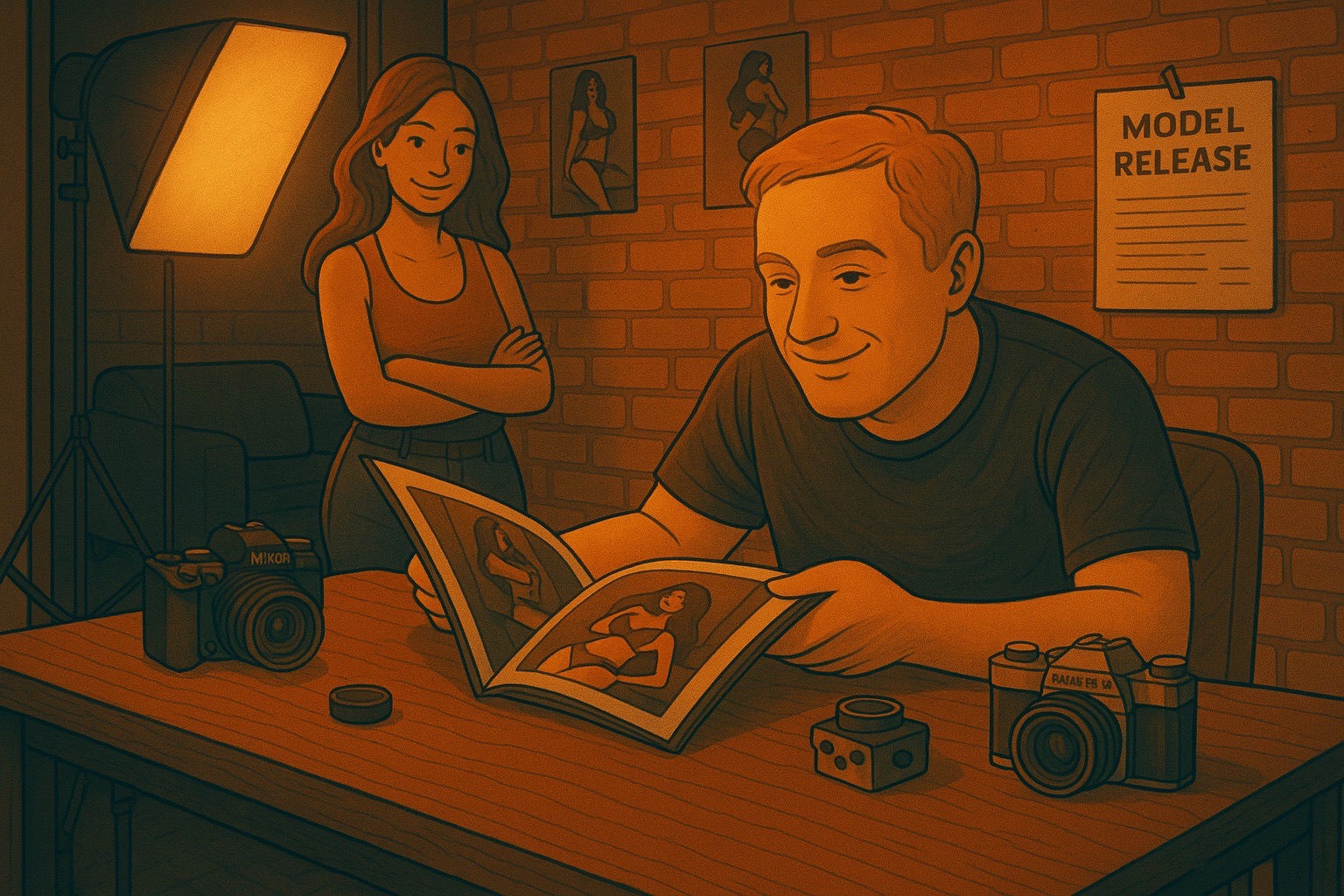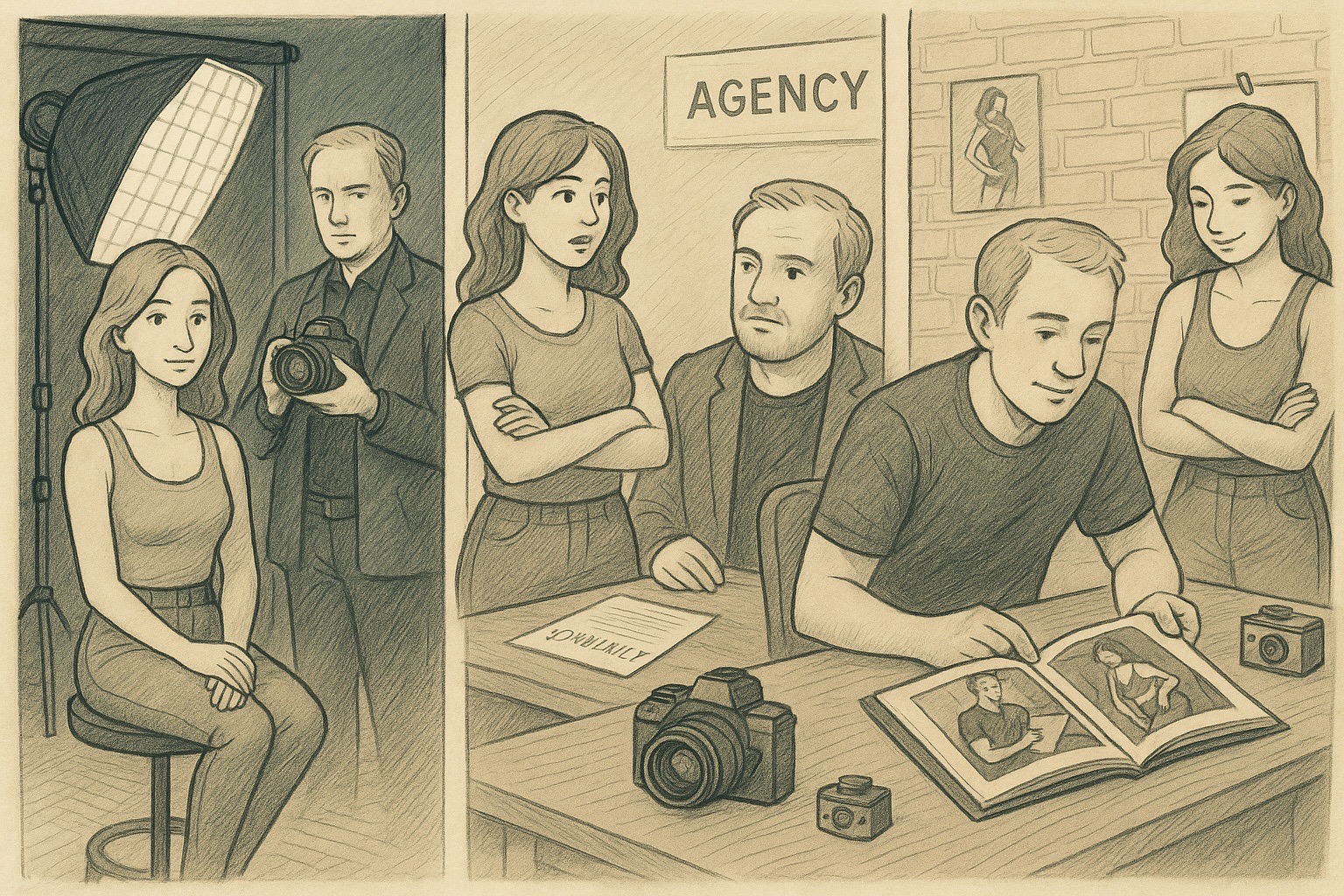If you’re looking to get into modelling, then having a strong portfolio and examples of previous work is a important part of getting paid jobs, which for most people, is the main goal. However, how do you get a portfolio and should you, as a model, be paying for it? Well…it depends.
Personal Portfolio for Self-Promotion
If you’re looking to get into modelling and planning to put yourself out there as an independent model, free of any agency or representation, then in theory, yes, if you’re reaching out to photographers and seeking their services, then it’s likely that the photographer will be expected to charge a fee… I mean, after all, it’s their profession and a pretty expensive one at that.
What the heck is TFP, TFCD or TFDD?
There’s a long-held practice between photographers and models, which used to be called TFP (Time for Prints) which then changed it’s name to TFCD, which means Time for CD (yes, CD like those things you used to put into your computer or car stereo). However, call it what you will, let’s go with TFDD (Time for Digital Download), it’s ultimately a mutual agreement, ideally bound by a written contract, that the photographer will offer their time and services at no charge, in exchange for the model’s participation.

This is a really great way to get started and honestly, many photographers are open to the idea. However, you should still seek to work with photographers that align with your ideas and visions for your portfolio, even if that means you limit some of your options. Just going to any and every photographer willing to offer a free photo session comes with some risks and might actually damage your credibility or public image if you end up in a situation that doesn’t reflect well on your modelling ambitions.
Be open-minded but it’s your right to be picky too. Another thing you should do, is spend a bit of time to research the photographer offering you a session. I hate to say it, but there are some photographers out there who use their position to take advantage of people looking to get into modelling… and of course, beware of the perverts.
Why pay if I can have them taken for free?
“TFDD” is a solid start and I would say that it’s worth exploring these options, however, the range of talent in terms of photographers might be limited. Often a photographer is looking for this sort of work only if they have a very specific project in mind or if they too, are looking to gain experience. There’s nothing wrong with working with a photographer with limited experience, heck, we all started somewhere… but I do look back at some of my earliest work and think to myself… “why the heck did I edit it like that” or “damn, I wouldn’t want this to be published on the web anywhere” – this comes with time and experience, and often TFDD shoots provide the photographer with the usage rights, which means if you end up having some regrets, that can lead to a rather awkward conversation.
Therefore, it’s sometimes better to pay for your photos outright. In almost every case, unless specified otherwise, when you pay for a session, you as the model, are paying for the images and you should have no restrictions on how you use them and the photographer would typically be required to ask for your consent if they wish to publish them in their own portfolio.
Another thing is, when you pay for images, the photographer should not leave any logos or watermarks on the image, which if often a requirement of professional portfolios as most modelling agencies or representatives do not agree to promote the photographer of the photo as this is normally a conflict of interest for them.
Modelling Agencies
Like photographers, modelling agencies come in all different shapes, sizes, experiences and representation. Almost everything that I’ve mentioned above applies just as much to selecting an agency as it does to working with a photographer. Of course, part of what the agency is doing, is getting you work and that work will often be with a range of different photographers.
The main difference here, is that realistically, you shouldn’t be paying for a portfolio or photo session, instead, the agency is the one who is supposed to be paying you. However, this is not always the case and that should raise some questions.
When should I pay an agency?
If the agency is asking you to pay for a “professional portfolio”, you should begin by asking them what guarantees that they have for you in return. This is a totally reasonable request and honestly, the answer should be able to satisfy you and leave you with a sense of confidence.

If the agency respond by telling you that they require this fee in order to give you experience and promote you, then they should be able to guarantee you work in return for this fee, which of course, you should be paid for. If they’re simply asking you to pay and not be able to guarantee you even enough jobs to cover that fee, then sadly, it’s more than likely a scam or very unserious agency… and unfortunately, there’s a lot of those out there.
If however, you decide that you are willing to pay for the professional portfolio, then you should also make sure that you have the rights to publish the images without restrictions. Why?… Because just like you may choose to pay a photographer to receive the rights to the images, the agency is effectively an intermediary between you and the photographer. What’s stopping you just going directly to a photographer and asking them for the same thing and having all the rights to post and do as you please, especially if the agency doesn’t guarantee you a minimum amount of work to cover your expenses?
In short, if the contract with the agency guarantees you to get as much money back as you invested, within a reasonable amount of time, then it’s fine to pay for the initial services and promotion of your talent, especially if they’re reputable and demonstrate competence. If not, then you might as well put that money towards finding a photographer that can help you build a strong portfolio. Just avoid bad modelling contracts.
Where do I stand as a Photographer?
At this point, I have over 15 years of experience. As I mentioned earlier, I’ve gone through that phase of “TFCD” many years ago, some I look back on with fondness, others, which you won’t see here on my site, with some regrets… ultimately, some are just a bit “cringe” – never thought I’d say that, but I here we are.

That doesn’t mean that I am not offering TFDD sessions, in fact, I recently took on a personal project called “Contours & Colours (mature) ” and in exchange for the time of my models they received a bunch of the “best” images from the session, which they could select themselves. This was also backed up with a Model Release form, which clearly stipulated the terms of the session and how images can and should be used.
For me, this was the best option, because I wasn’t entirely sure how the results would come out and if the model is willing to learn with me as I tried something new, then why not offer them the opportunity to collaborate?
I do actually have a section on this site where I publish my castings but also invite people to share their ideas with me, so definitely still open to the idea. However, I’m at the point in my career and through the amount that I’ve invested in gear and having my studio, I do expect to be paid for my services, though I do try to keep them affordable, as after all, this is my passion!

